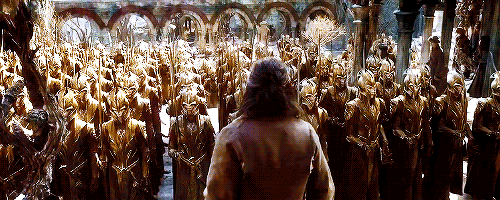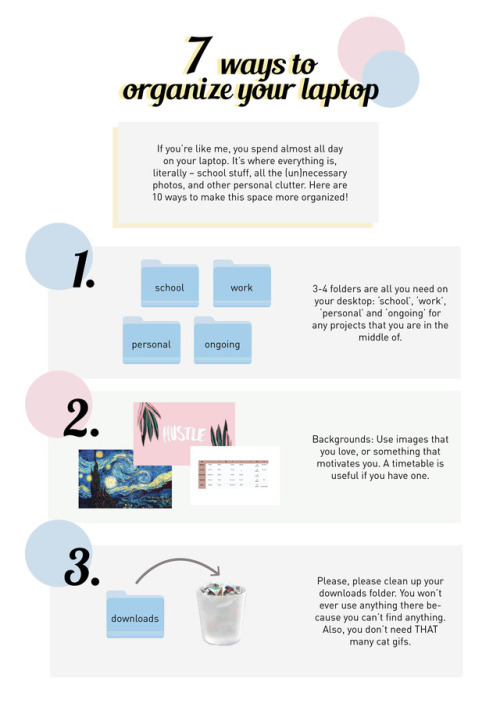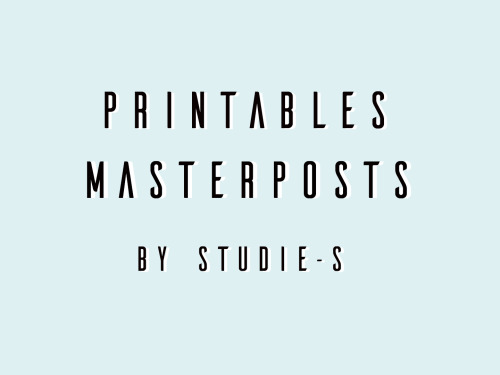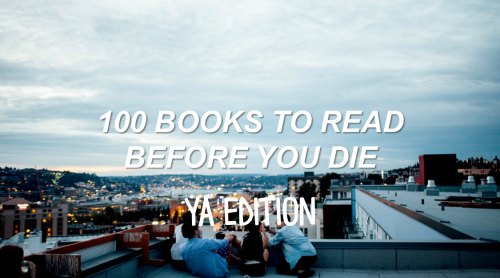Latest Posts by zoel1212 - Page 2
Fantasy Guide to Worldbuilding
Language and Culture
You have your land and your people. Now onto what kind of people they are and what they sound like. Culture is the greatest worldbuilding tool you need to master. Language is extra spice.
Culture
Culture is a collection of customs and attitudes formed over time. Culture forms around a land, metaphorical cling film if you will. Land influences culture.
Entertainment: What amuses your people? Bull fighting? Gladiators? Tasteful plays?
Food and drink: What food is common? Is there a delicacy popular in the region? Pasta is Italy’s delicacy. Beer is a common drink in Germany
Taboo: The no-no of society. What can’t be spoken about or done? In Harry Potter, the name of Voldemort is taboo. In our world, for most of us anyway, incest and cannibalism are the major taboos
Myths: Are stories that explain things without evidence from science. The Egyptians thought that a dung-beatle rolled the sun across the sky. Celtic cultures believe that a death is sounded by the scream of a banshee.
Games: What games are played by children or adults? Are card games popular or board games? Is it popular to watch games or gamble on them? How often are they fixed?
Traditions: What do your people do? Do they have holidays? In Incan tradition, human sacrifices were common. On a light note, the Greeks held the Olympics ever few years. Is there traditional ceremonies or words one says on a daily basis?
Values: The Spartans valued Spartan behaviour. Renaissance culture valued skill and honour. What is the important concepts of your people? Strength? Honour? Intelligence? Do people get treated differently when they don’t follow the values of the land?
Meeting and greeting: How do people say hello? Is there a word or saying? A signal? And goodbye?

Language
Language is the heart of a land. You don’t need to create a large lexicon of made up words and rules. You can. I did once, it was fun. You don’t need to show the language in every line. A word here and there can add spice to a story. Language effects accents and way of speaking.
Side note: “Tír gan teanga, tír gan anam.” A country without a language is a country without a soul. Ireland is a county with two main languages: Irish (Gaelige) and English. Colonization almost stamped out the language. The Irish language is difficult to learn but it brings pride to me as Irish girl to know parts of it. It breaks my heart not to be fluent in my native language even after almost fifteen years of study. Language is not just words. It is the heart and soul of a land.
Advice for World-Building
As a long time Table Top role-player, I have a bunch of top secret techniques for creating a fully fleshed0out world rather quickly. Especially when you need to give your players a place to explore on short notice.
Here is an easy way to turn a small town that is basically just a quest-giving-tavern attached to a inn, into a rich, thriving civilization. The trick is:
Economics.
Ask yourself, what does this place make, what does this place need?
Establishing the economic landscape of the village and how it relates to the area around it can work miracles for world building.

Does the town have a community of hunters? Once the meat is smoked how is it distributed/sold? Do they harvest lumber? If so how do they keep that industry sustainable without chopping down every single tree? Are there druids who calm the animal and regrow the fallen trees?
Does it have any specific artisanal goods? Who trains the next generation of craftsmen? Is this village the only one in the area that can craft this specific item? Does that make them a target for competitors who want their secret techniques?
What local animals could be tamed to assist in transporting the exports? How does the local wildlife treat the villagers? Is there issues from monster/animal attacks and how does the village defend itself?
What goods are important enough that the village will invest in protection from bandits while transporting it? If they easily produce tons of wheat, but it takes a lot of effort to grow sugar cane, who do they trade that sugar cane to in order to get a return on investment?
Once trade is complete, who gets the profits? Is there a merchants guild or union that makes sure the profits are fairly split? Or does a mafia control the flow of money? Is this town a branch of a larger trade union so there are hostilities between the locals and the out of town guild members?
What resource does the town lack? What resource would cripple the town if it was suddenly cut off or their trade partner couldn’t produce enough of?

Once you are able to answer a few of these questions quickly, you can establish a locations unique identity with only a few of these points.
When you combine two of more of these question you can start to build a narrative that can facilitate stories.
Example:

The Old Lor-Ahmek Parish:
Produces: Gold, Iron, Stone, Jewelry, Well Trained Archers
Requires: Labour, Produce, Transportation, Fabrics.
The abandoned castle once belonged to a vassal of the old King. The bitterly cold lands were given to a young lord as a show of good faith during a treaty signing. The lands turned out to be un-farmable since it was so far North that the harvest season was too sort to turn a profit. The lord sunk most of his fortune in building his massive castle and died in poverty. The land was returned to the king and was then gifted to a small sect of monks and turned into a Parish for study and meditation.
It was a costly slice of land since it had no exports, until an excavation intended to expand a catacomb revealed rich deposits of iron and gold underneath the mountain.
The parish was not equipped to become a full smithery so the iron and gold needs to be transported through the treacherous badlands to a warmer village in the South, where they have enough coal and lumber to keep their furnaces lit.
The monks of Lor-Ahmek study alchemy and various sciences, so while they can’t work with the materials on a large scale, they do craft jewelry and delicate accessories while they experiment on new metalworking techniques.
In order to dig the monks brought in prisoners from the central kingdom to work off their crimes in the mine, and they spend their nights trying to convert lost souls. Because of the long stretches of cold badlands, Lor-Ahmek makes for a very functional prison. No one can escape without enough food and clothes to survive the blizzards. Many prisoners become monks themselves once their sentence is paid off, since it is easier than trying to escape. Not to mention day after day of the monks persistent conversion attempts tends to wear them down.
Due to the large amount of ex-prisoner converts, the monks of Lor-Ahmek are hardened and trained in various forms of combat. The wide variety of prisoners brought from all across the world means that Lor-Ahmek is a melting pot of diversity. The sharing of cultures has created a unique cuisine of hardy stews and spiced meats. The delicious warm foodstuffs attracts travelers that plan on heading further North and the upper layers function as one large tourist trap.
The stone brought up from the mine in search of more ore has been used to build wind-resistant walls the dot the desolate landscape. Guard patrols run from wall to wall and have to train their archers to fire with the curvature of the wind. The central kingdom sends their elite archers here to train them in cover based combat, as the conditions of Lor-Ahmek result in archers who can curve their long ranged arrows and hit enemies behind cover.
Food is often scarce and large cave dwelling bat-creatures are raised for their meat and milk. The archers hunt the rabbit-creatures and elk-creatures for meat, and when the massive rhino-moose migrate, it is almost a rite of passage to hunt one of the enormous creatures down as a team. The rough hides of the local fauna are useful, but Lor-Ahmek often trades for finer furs from the South to line their clothes for warmth. Vegetables and fruit are expensive delicacies, since only root-tubers and mushrooms grown in insulated mine shafts.
The King often has to pay mercenaries and merchant caravans to move dangerous prisoners to Lor-Ahmek in exchange for the precious minerals, so a strict royal merchants guild controls the parishes finances. The Monks have taken a vow of poverty and the prisoners make no money so nearly all of the profits go to the King, covering the cost of transportation by the profits made off the gold and iron.
The monks and prisoners have to maintain the ancient crumbling estate and since profits go to the King, very little is provided for upkeep. Grey handmade clay mortar (dug up from the mine) is used for repairs, giving the buildings a cold, unsettling aesthetic.
The mine itself goes deep into the earth and uses a massive network of pulleys and elevators to move stones and ore. Cave-ins happen as the mine-shafts dig outwards under the surrounding tundra, and sometimes they run into warrens that belong to dangerous burrowing monsters. When this happens the tunnel is intentionally collapsed and the prisoners within are often left for dead.
Already this location provides for many quests and plot threads, such as:
A bounty is placed on one of the Monks: A violent prisoner has paid off their debt and found peace at the parish, but the family of the victim still wants blood. The other monks refuse to let their new brother go since they consider his past sins forgiven, and the target has to be convinced to give himself up, taken by force or allowed to escape his bounty.
A gang of criminals wants you to go into the mines and rescue their trapped comrades: A cave-in trapped some prisoners that were members of a gang. The leader of the gang knows the monks and guards will not spare the men to rescue the prisoners. The gang can’t pay you much but you will earn the favor of the gang if you save their friends in time.
A caravan was lost in the blizzard: The yearly trade caravan of ore was run off the road by a blizzard and the monks worry they will be found by bandits before they get back on the road. A lot of survival and tracking skills are needed to brave the harsh climate and find the lost merchants in time, if they are not rescued the Parish is in great financial danger.
Transport a valuable reliquary: The monks have been using gold to craft a powerful alchemic reliquary and need to hire couriers to move it South undetected. However, this reliquary contains powerful magic and there are shady individuals willing to pay you more to NOT complete your quest.
Ghosts in the Mine: So many prisoners have died untimely deaths in the hungry mines that ghosts are appearing, and hindering the mining operations. Adventurers who can banish the dark spirits will be well rewarded to cover up the indifference of the monk overseers.
Master Archery Challenge: An elderly guard has valuable information for the adventurers current main quest, but he won’t share his secrets until a member of the party proves themselves on the ice fields. A high level ranger or rouge might be able to compete against the Master Archer and victory might result in learning the secret techniques of the Lor-Ahmek. (Basic Ranged Attacks now ignore cover bonuses.)
There are lots of other techniques for fast world building but building stories through what they need/have is one of my favorites.
Let me know if you want to see more guides to World-Building/Character Building.
Part 1/?
next->
World Building Tips: Empires and Power Structures
World building is important in any setting. There are places, such as fantasy literature where it can become the difference between a believable world and an unbelievable one. Suspension of disbelief is often a critical part to stories.
Many fantasy books take place during times of war, or revolution or even a fall of a corrupt empire. I love reading these sorts of stories, as many people do. Power structures can be complex. They can be used to create tension and drama between characters - take for instance the hero versus the corrupt government troupe in fiction such as The Hunger Games, Harry Potter or even more traditional fantasies such as Tigana ( by Guy Gavriel Kay) or The Wheel of Time series (by Robert Jordan). As a reader it can be compelling to follow these stories. For writers though, it can seem daunting to go into the details of shaping a believable power structure. Here are some basic tips for creating one.
There are four crucial factors to any power structure. These are as follows:

1. Military - this includes the size of the army, the types of technology used (guns or swords? navy or land army?), the basic structure of the army (is it highly regimented like the Romans? What are the different groups within the army? How are they divided - by technology, skills or social status?). Another important question here is why has the military developed in this way? The Roman military, for example, grew out of competition with other Italian states. The opposition is equally important here - who were/are they within your story? Apply the above questions just as much to them, because empires and other structures are influenced by the world around them. The military can be the reason an empire begins in the first place. The military should also play a role in sustaining the power structure/empire. It doesn’t have to be the strongest factor by any means. It may even become the downfall of the structure in the end.

2. Economy - How is your power structure or empire funded? Does this change over time? Does your empire take part in internal or external trade? Is trade important to the running of the empire? Resources such as crops, fertile land or people are also a part of this and influences the larger actions (such as conquest) your structure takes towards other countries. Trade can be a form of control and influence as well, even outside of the structure’s territory. In terms of story, a lot of decisions that are made involve trade or economic reasons - no one wants to get on the wrong side of someone who controls valuable resources or trade with other entities. The British Empire was based mainly on trade and this insured a global influence even as it declined in actual power.

3. Administration: The system of government and the way it manages itself is important to know. Is it a traditional monarchy or a democracy? How is leadership decided? How is power delegated throughout the larger administration? Hierarchy? One person can’t do or know everything. In terms of empire and conquest this is equally important. Does the empire recruit the local elites from conquered areas to administer to the general public, like the Romans? If your story is set in the outskirts of your empire, this could effect the outcome of the story - local elites might enjoy the power they have gained through an alliance with the larger empire and thus be unwilling to revolt against it. What other ways does your power structure control its territory? Does it use culture, or a set language to spread out into new territory? What kind of empire is your empire? Is it land based (only conquering territories linked by land) or maritime (navy focused with overseas territory)?

4. Culture: How does your power structure interact with its subjects? Even in a small area, different ethnic groups exist, so what unites all of them together? Are they all united, or is there groups of people the power structure leaves out? Have they always been left out deliberately or have these groups formed over time?How does the the government and the people from inside the empire view outsiders and their culture? Does this influence your story or characters? Do negative stereotypes or different language create a barrier between your character and others? In newly conquered areas is the empire’s language, laws and social ideals endorsed to locals or is it forced upon them? Is religion important to how the empire works or interacts? For example, before war do the gods need to show approval for the empire’s commanders? What about clashes of religion with other areas? Where do cultures intersect? Is your empire influenced by an older power or a hard past? What is seen as integral to your structure’s culture - art, literature, music etc? Are allies connected with your structure through culture, a shared distant history?
Most power structures rely on all of these factors - but none are ever equal in importance. Your government will identify one or two of these areas as important and focus on them. This can impact how the structure comes together and eventually falls apart - the greatest strength becomes a weakness, or something is overlooked until it is too late.
This is a long post - so I’m going to leave it here for now. If you guys have any questions, feel free to use the Ask feature to contact me.
Yep. So much.

I want to travel
Damn that’s accurate
me: *is one day into summer break*
me: k so when can i go get my school supplies for next year


7 Ways to organize your laptop because we can always be a little more organized on our devices (including myself).
So helpful! Thank you! 💖💖💖

Hey guys, so I’m nearing the end of my senior year, and it’s been great so far! I accomplished my academic tasks efficiently and didn’t burn myself out, and I think the main contributor to my success as a student is my organization system. This system has been refined throughout my high school years, but I think now I’ve finally found the most effective methods.
Please remember that this isn’t the only organization system you can adopt; this is just the one that works the best for me, and I hope that by sharing it with you, you’ll gain a new perspective on how to stay organized as a high school student.

The first thing I wanna talk about is my notebook system, which I briefly mentioned in my Guide to Note-Taking.
My notebook system comprises three types of notebooks: the Everything Notebook, the subject notebook, and the revision notebook.


The Everything Notebook
The first stage is in-class notes. I only bring one notebook to school every day. I call it my Everything Notebook, and this is where I write down all of the notes I take in class. This way, I don’t have to lug around six notebooks where I’m only going to use a few pages in each of them that day.


Subject Notebooks
At the end of the day, I would revise my notes and compare them to the syllabus so I know where we are in the learning process. I would then transfer my class notes from my Everything Notebook to my different subject notebooks. This is stage two. I also start to jazz up my notes because I use the notes in my subject notebooks to study for tests.
In addition to my class notes, I include material from my teachers’ notes that they might not have elaborated on, as well as points in the syllabus (I’m currently taking A2) that were only glazed over briefly, or not at all, in some cases. (Note: this does not mean they completely skip a chapter or topic; it’s more like they missed a few bullet points that should be in my notes but aren’t. An example would be if we’re learning about phenol reactions and the teacher forgot to mention the use of FeCl3 as a test for phenol.)

Revision Notebooks
Stage three comes a little later, when exam week is just around the corner. Essentially, I rewrite and improve my notes from my five different subject notebooks into a single revision notebook or binder. (Recently, I’ve opted for a revision notebook because they’re lighter and easier to carry around.)

Because my teachers don’t always teach in the order of the syllabus, the first thing I do is organize my notes according to the syllabus. I would then fill in any other missing gaps in the material that hadn’t been filled in stage two.

When compiling material for my revision notebook, I use as many sources as possible: my own notes, my teachers’ notes, youtube videos, online sites, and my favorite, the mark scheme! I add in some answers from past papers (explanations only, so no calculations) mainly to secure marks. It’s safer to memorize definitions straight from the mark scheme than from the textbook or from handouts. I also do this to ease my memorization, especially for topics that require lengthy explanations. It’s a lot easier to remember the 6 points I need to explain the principles of NMRI than to remember everything in the four-page handout my teacher gave me.

Folders and binders are essential to organizing your papers. Some people keep a single accordion folder for all their papers, but for me it’s just too heavy to carry around all the time. The same goes for subject folders that are brought to school every day.
Instead, my binder/folder system comprises my Everything Folder and my subject binders.

The Everything Folder
The folder I carry with me to school every day is this A4 folder I got from Tokyu Hands. It has 5 pockets, one for each day of the week, so all the papers I receive on Monday will go behind the first divider, and so on.
Some people also keep blank papers in their folders; I don’t because my school has its own lined paper and graphing pads that I keep under my desk that I use if a teacher asks us to do an assignment on those papers. If I do work at home, I prefer to just use a plain A4 paper or a legal pad.

Subject Binders
At the end of the week, I’ll sort my papers into my subject binders. Sometimes I’ll keep some papers in the folder if I think I’ll be needing it the next week. This usually only applies to worksheets because all my teachers’ notes are available on Google Classroom, so I can access them even if I don’t physically have them.

Each of these binders have sections inside them:
Physics: 1 for handouts, notes, and tests, 1 for Paper 4 (Theory), 1 for Paper 5 (Practical Planning). I included extra tabs to mark the different topics in the handouts section.
Chemistry: same as Physics.
Economics: 1 for Paper 3 (MCQ), 1 for Paper 4 (Case Study and Essay). A lot of my Economics material is online, though.
English: 1 for Paper 3 (Text and Discourse analysis), and 2 for Paper 4 (Language Topics, which includes 1 for Child Language Acquisition, 1 for World Englishes). Past papers, handouts, and notes all go under their respective topics.
Mathematics: I just keep everything together because I never revise math and just constantly do past papers.
This makes it easier for me to revise each subject because I can just take one binder with me instead of a messy folder with everything just shoved in there.

I keep a magazine file for each of my A-Level subjects (English and Mathematics are combined). All my textbooks, revision guides, and subject notebooks are kept here, so if I need to revise one subject, that’s the magazine file I’ll take out.

These magazine files prevent any small things (like my book of flashcards) from being shoved to the back of my bookshelf, or materials from different subjects from getting mixed up.

In my senior year, I mostly plan using this app called Edo Agenda. It syncs across all my devices for free and has all the features I need: a to do list to organize tasks, monthly and weekly calendars to organize events, a journal to organize notes and memos.

I used to bullet journal regularly, but it takes too much time during weekdays, so now I just bullet journal for the therapeutic effects it gives me, and I use an app for organizing tasks and events. Sometimes at the end of each week, I’ll transfer my tasks to my bullet journal and then decorate the page, but again, this is just for its therapy.

Organizing your school supplies is just as important as organizing your papers and notes. With a more organized backpack and pencil case, you won’t waste time looking for your things at the bottom of an abyss.


Pencil Case
I don’t find it necessary to bring so much stationery to school unless I plan on making notes at school (usually during revision week).
Backpack
Because we’re already in the revision term, I don’t really carry a lot of things in my everyday backpack, just the following:
Pencil case
Everything Notebook
Everything Folder
Revision notebook
Kindle
Phone
Wallet
Earphones
Calculator
Speaker
Drinking bottle
A pouch with things like a hairbrush, pads, and lip balm
And that’s all for now! I hope this post will help you organize your school life (if you haven’t already) or at least provide some useful insights on some ways to stay organized as a high school student.









School and tumblr

hey guys !! this is my first masterpost hahaha exciting so exams are coming up soon (for me), aka those early may dates.. here is just a bunch of resources that i found !!
study tips 101
i have terrible memory! how do i study? by @estudying
conquering procrastination by @studybudyblr
how to stay focused, motivated, and on track by @briellestudies
how to study for math by @enfpfocustudyblr (making a math masterpost soon)
focus and motivation by @katsdesk
study methods by @heystudy
“the oh god it’s the night before the exam” by @renaistudying
another test is tomorrow by @getstudyblr
stress help by @highschoolering
101 study tips by @study-early
6 things people don’t tell you about studying by @behindonstudying
ap testing tips by @katsdesk
3 steps in studying by @milkystudies
studying from ..
how to study from textbooks by @strive-for-da-best
four steps to reading textbooks by @kimberlystudies
lecture notes by @strive-for-da-best
revision notes by @raistudy
how to: flashcards by @pseudocodead
more flashcards by @studydiaryofamedstudent
how do i study ?? / being organized
study schedule by @mindofamedstudent
pomodoro printable by @cmpsbls
printables masterpost by @studie-s
vocab and formulas printables by @studeyh
how to maintain good notes by @skeletonstudy
typing notes by @study-well
colorcoding by @kimberlystudies
highlighting by @studygene
highlighting pt 2 by @ayetstudies
how to use sticky notes by @etudiance
organized study spaces by @etudiance
sketches for notes by @staedtlers-and-stabilos
how to revise by @youaretheairinmyalveoli
if any of these links are broken, please message me so i can update it. hope you find these helpful !!
- xoxo j
Keep reading

MASTERPOSTS
studiying’s printable masterpost by @studiyng
planner printables by @studywithnerdyglasses
free printables masterpost by @chemistrynerd2020
daily planner + today … + weekly planner + 24/7 weekly planner + monthly planner + revision planner and etc by @theorganisedstudent
free 2016 calendar printables by @gracelearns
PAPER PRINTABLES
note taking outlines by @studygene
note outline printables by @studygene
TO DO LIST PRINTABLES
to do list and weekly agenda by @paperplanners
to do list by @thearialligraphyproject
weekly to do by @studeying
detailed weekly planner by @diehardstudyblr
20 printables to do do list
daily planner by @cmpsbls
daily planner by @arystudies
planner pack by @studysanity
assingnment overview / tracker printable by @studeying
goal getter printable BY @janicestudies
cute to-do list printable by @studeying
exam study pack + study planner by @ennui-for-me
study printable pack by @marialearns
2016 PLANNER PRINTABLES
planner 2016 printables by @plantstudies
2016 planner printables (with stickers) by @marias-studyblr
cute printable planner by @48jn
printables + stickers by @cmpsbls
free planner 2016 by @muna-mm-mi
monthly printables by @thearialligraphyproject
OTHERS
how to make printables by @cmpsbls
pomodoro printables by @cmpsbls
7 free budgeting worksheets
form new habits by @burymewithmyplanner
english printables by @meddiestudies
monthly budget template by @ahhnahsfinalyear

these lists of books to read before you die that are full of classics are all well and good but what if you don’t like classics? and what about the ya ones that are just full of popular series? so this is an alternative list of ya books you should read before you die. thanks to everyone who contributed books; i’ve had to miss some off because i’ve got more than 100, so i’ll probably include them on a second list. (also, i’ve not actually read all these books. it’s a group effort)
under the lights by dahlia adler
the wrath and the dawn by renee ahdieh
throne of the crescent moon by saladin ahmed
simon vs the homo sapiens agenda by becky albertalli
the absolutely true diary of a part time indian by sherman alexie
last night i sang to the monster by benjamin alire sáenz
aristotle and dante discover the secrets of the universe by benjamin alire sáenz
mosquitoland by david arnold
pure trilogy by julianna baggott
the fixer by jennifer lynn barnes
the last leaves falling by sarah benwell
ashes trilogy by ilsa j bick
the darkest part of the forest by holly black
curse workers by holly black
noughts and crosses by malorie blackman
anna duology by kendare blake
the princess and the captain by anne-laure bondoux
the diviners by libba bray
gemma doyle trilogy by libba bray
fire and thorns by rae carson
gallagher girls by ally carter
heist society by ally carter
graceling realm by kristin cashore
a hero at the end of the world by erin claiborne
artemis fowl by eoin colfer
the miseducation of cameron post by emily m danforth
i’ll meet you there by heather demetrios
just listen by sarah dessen
spiderwick chronicles by tony diterlizzi & holly black
penryn and the end of days by susan ee
engelsfors trilogy by sara b elfgren & mats strandberg
fearsome dreamer by laure eve
dragonfly by julia golding
since you asked by maurine goo
half life trilogy by sally green
to all the boys i’ve loved before by jenny han
burn for burn by jenny han
saving june by hannah harrington
the outsiders by s e hinton
shades of london by maureen johnson
shadowshaper by daniel josé older
everybody sees the ants by a s king
in honor by jessi kirby
charm & strange by stephanie kuehn
everything leads to you by nina lacour
micah grey by laura lam
momentum by saci lloyd
huntress by malinda lo
adaptation by malinda lo
we were liars by e lockhart
legend by marie lu
the lost girl by sangu mandanna
the lumatere chronicles by melina marchetta
on the jellicoe road by melina marchetta
wicked lovely by melissa marr
since you’ve been gone by morgan matson
yaqui delgado wants to kick your ass by meg medina
the lunar chronicles by marissa meyer
conquered earth by j barton mitchell
if you find me by emily murdoch
i’ll give you the sun by jandy nelson
chaos walking by patrick ness
a monster calls by patrick ness
the summer of chasing mermaids by sarah ockler
before i fall by lauren oliver
wonder by r j palacio
even in paradise by chelsey philpot
his dark materials by philip pullman
the demon’s lexicon by sarah rees brennan
the lynburn legacy by sarah rees brennan
slice of cherry by dia reeves
falling kingdoms by morgan rhodes
how i live now by meg rosoff
bone gap by laura ruby
the winner’s trilogy by marie rutkoski
written in the stars by aisha saeed
persepolis by marjane satrapi
the archived by v e schwab
between shades of grey by ruth sepetys
the bone season by samantha shannon
far from you by tess sharpe
more happy than not by adam silvera
jasper jones by craig silvey
unwind dystology by neal shusterman
grasshopper jungle by andrew smith
the secrets of lily graves by sarah strohmeyer
all the rage by courtney summers
an ember in the ashes by sabaa tahir
because you’ll never meet me by leah thomas
my heart and other black holes by jasmine warga
ms marvel by g willow wilson
don’t touch by rachel m wilson
brown girl dreaming by jacqueline woodson
howl’s moving castle by dianna wynne jones
dirty london by kelley york
made of stars by kelley york
how to save a life by sara zarr
falling into place by amy zhang
i am the messenger by markus zusak
wolfe brothers by markus zusak

Picture- helloemilie on Instagram Edit- Liel Naor
Peopleeeeeeeee
reblog this is you love the curse workers
I NEED TO FIND YOOOU.


